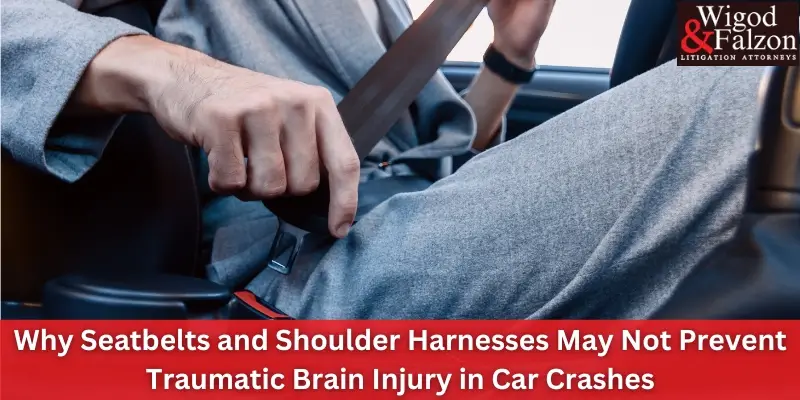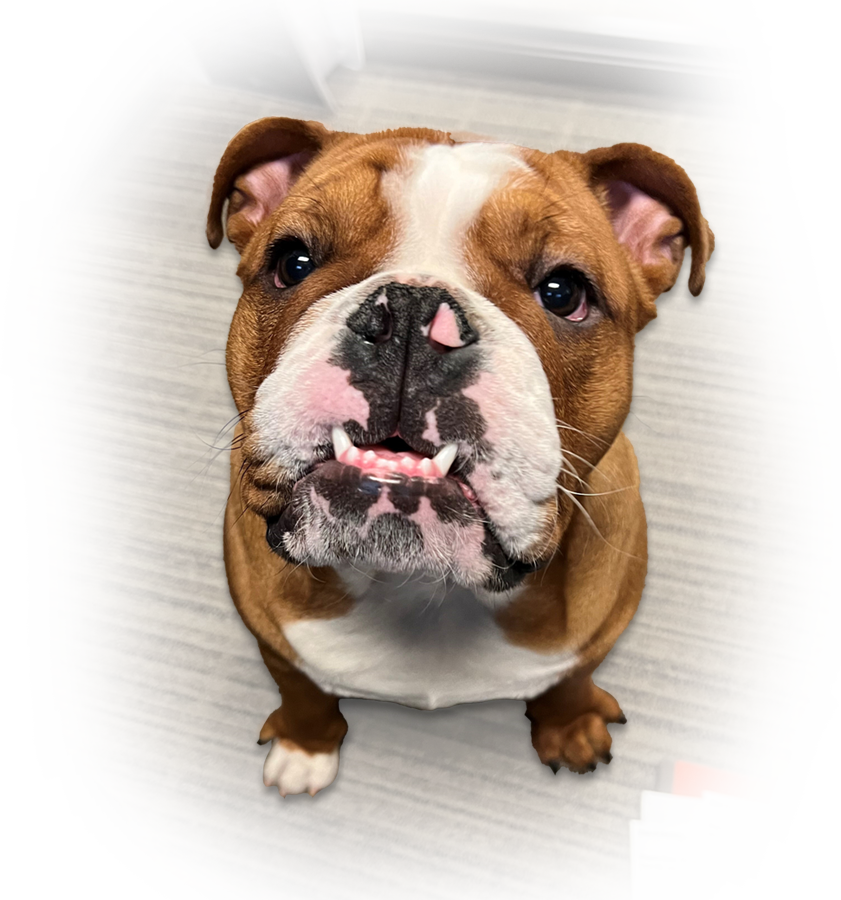|
|
Last Modified on Apr 28, 2025
Why Seatbelts and Shoulder Harnesses May Not Be Effective in Preventing a Traumatic Brain Injury (TBI) in a Car Accident
Seatbelts and shoulder harnesses are among modern vehicles’ most important safety features. They have saved many lives by reducing the risk of fatal injuries during car crashes. However, despite their value in protecting the chest, abdomen, and limbs from catastrophic trauma, they are not foolproof when it comes to preventing traumatic brain injuries (TBIs). In fact, TBIs can and do still occur in properly restrained passengers, even in vehicles with advanced safety systems.
This article explores why seatbelts and shoulder harnesses may not prevent TBIs, the mechanics behind such injuries, and the implications for victims and the medical and legal communities.
What Is a Traumatic Brain Injury?
A traumatic brain injury (TBI) is an injury to the brain caused by a direct injury to a person’s head, a whiplash-like injury, or a penetrating injury to the skull. TBIs can be anything from a mild concussion to severe brain damage that can result in coma or death.
Common symptoms of TBI include:
- Headache
- Confusion or disorientation
- Loss of consciousness
- Memory problems
- Vision or speech issues
- Emotional disturbances
- Seizures or loss of motor function (in severe cases)
The Role of Seatbelts and Shoulder Harnesses
The modern three-point seatbelt system, including a lap belt and a diagonal shoulder strap, is designed to secure a person’s torso during a crash. This restraint prevents the occupant from being ejected, limits contact with hard surfaces inside the car (dashboard, steering wheel, windshield), and distributes the crash forces across the body’s strongest parts-the pelvis and ribcage.
But while the seatbelt secures the torso, it does not secure the head and neck, and therein lies the problem.
Mechanism of TBIs in Seat belted Occupants
Here are several biomechanical and situational explanations for why a properly worn seatbelt may not prevent a TBI during a car accident:
- Deceleration-Induced Brain Movement
In a high-speed collision, the body is rapidly decelerated by the seatbelt-but the brain continues moving inside the skull due to inertia. This can result in the brain bouncing against the inner walls of the skull, causing what’s known as a coup-contrecoup injury (a dual injury on opposite sides of the brain). Even without the head striking any external object, this internal movement alone can cause significant brain trauma.
- Whiplash and Rotational Forces
In rear-end and side-impact collisions, the head is often subjected to sudden whipping or rotational movements, even when the body is restrained. These forces can stretch and tear axonal fibers in the brain’s white matter, leading to diffuse axonal injury (DAI)—a serious form of TBI that may not immediately appear on CT scans but can have devastating long-term cognitive effects.
- Head Contact with Interior Surfaces
Seatbelts prevent full-body projection, but they do not stop the head from slamming into objects like:
- Side windows (especially in side-impact crashes)
- Steering wheel or dashboard (especially if the airbag fails or deploys late)
- Roof (in rollover accidents)
- Pillars and headrests
Even low-speed collisions can cause the head to strike a hard surface with sufficient force to cause a concussion or skull fracture.
- Airbag Limitations
Airbags are designed to complement seatbelts, but they do not always deploy or may deploy incorrectly. Additionally, in angled or offset crashes, the head may miss the airbag entirely, bypassing this secondary protection. Even when airbags do deploy, they can cause injury themselves or fail to sufficiently cushion the head from angular or rotational motion.
- Improper Seatbelt Fit or Positioning
Seatbelts are engineered based on average adult body proportions. For children, petite adults, and older individuals with posture issues, seatbelts may not fit properly, causing the body to slip partially forward or sideways in a crash (a phenomenon called “submarining”). This can result in increased head movement and higher risk of impact.
Even among properly sized adults, reclined seats, slouched postures, or non-adjusted headrests can lead to improper alignment that increases TBI risk during a collision.
Common Accident Scenarios That Lead to TBI Despite Seatbelt Use:
Frontal Collisions
While the torso stops quickly due to the seatbelt, the head snaps forward. This shearing motion between the brain and skull is a leading cause of concussions and more serious TBIs, especially if the airbag doesn’t provide timely cushioning.
Side-Impact Collisions
These are particularly dangerous because the side of the head is exposed, and side airbags may be absent or insufficient. The head can strike the window or door frame directly, or be jolted sideways, causing rotational forces on the brain.
Rollover Accidents
During a rollover, the body may roll or twist against the restraint. The head often hits the ceiling or window, and violent motion can cause multi-directional brain trauma even without direct impact.
The Invisible Injury: Medical Challenges
One of the biggest challenges in dealing with TBIs in restrained passengers is that the injuries are often invisible. There may be no cuts, bruises, or broken bones. Patients may walk away from the crash and only later begin to experience:
- Foggy thinking
- Irritability
- Sensitivity to light or noise
- Sleep disturbances
- Memory or focus issues
Because there’s no visible trauma, patients may not seek immediate care, and insurance adjusters may dispute the connection between the accident and brain injury. Early imaging (preferably MRI) and neurocognitive testing are critical for diagnosis and legal documentation.
Legal Issues and Insurance Considerations
From a legal standpoint, the presence of a seatbelt often leads insurance companies to question the severity or even the existence of a brain injury. They may argue that proper restraint should have prevented such trauma, ignoring the nuances of deceleration, brain inertia, and rotational forces.
TBI Attorneys representing persons injured in auto injury cases must be prepared to:
- Educate adjusters and juries on TBI mechanisms in restrained occupants
- Rely on expert medical testimony and literature
- Corroborate cognitive decline through work records, family reports, and neuropsychological evaluations
TBIs, especially mild ones, can lead to years of suffering, lost income, and personality changes-and must be taken seriously even when the seatbelt was worn and there were no external signs of trauma.
The Bottom Line
Seatbelts and shoulder harnesses are essential safety equipment in vehicles. In many cases, they can reduce the risk of fatalities and catastrophic injuries. However, they are not a guarantee against all forms of trauma, particularly traumatic brain injuries. The head remains vulnerable due to its mobility, weight, and distance from fixed restraints.
Understanding how TBIs occur in restrained occupants is essential for medical professionals, accident investigators, and legal advocates. Survivors of car crashes who experience confusion, memory issues, or any cognitive symptoms should be evaluated promptly for brain injury—even if they walked away without a scratch.
In short, while seatbelts save lives, they don’t protect the brain from physics-and sometimes, that’s all it takes for a life to be changed forever.
Contact our lawyer team at Wigod & Falzon PC to discuss your car injury case to get the legal advice and free consultation.





